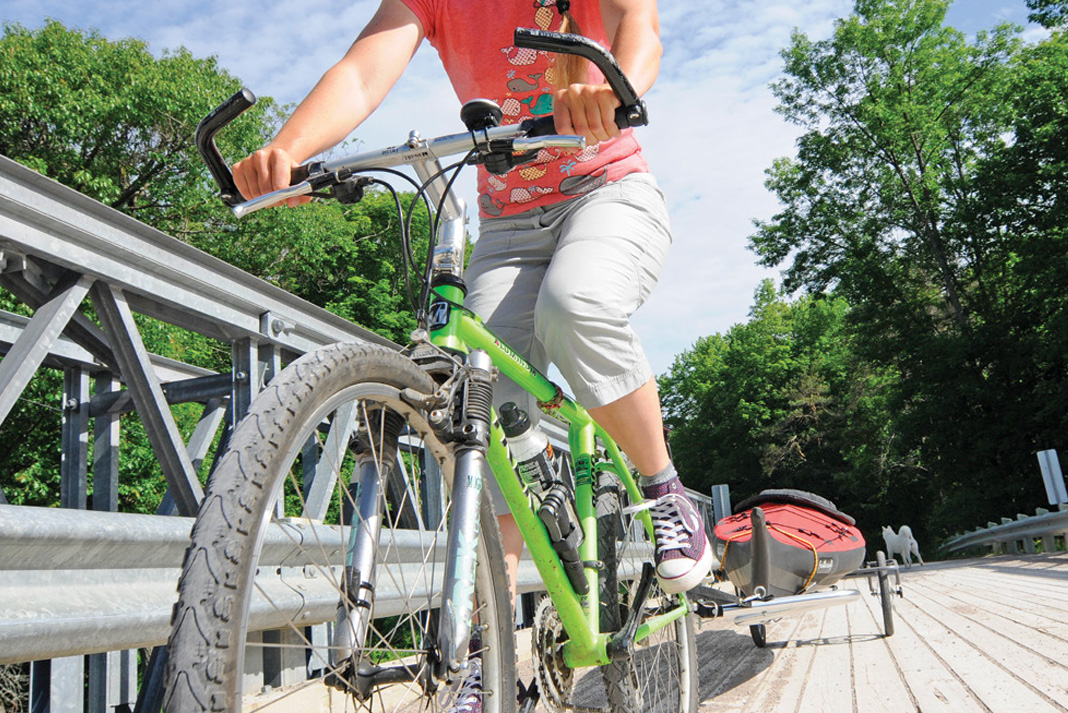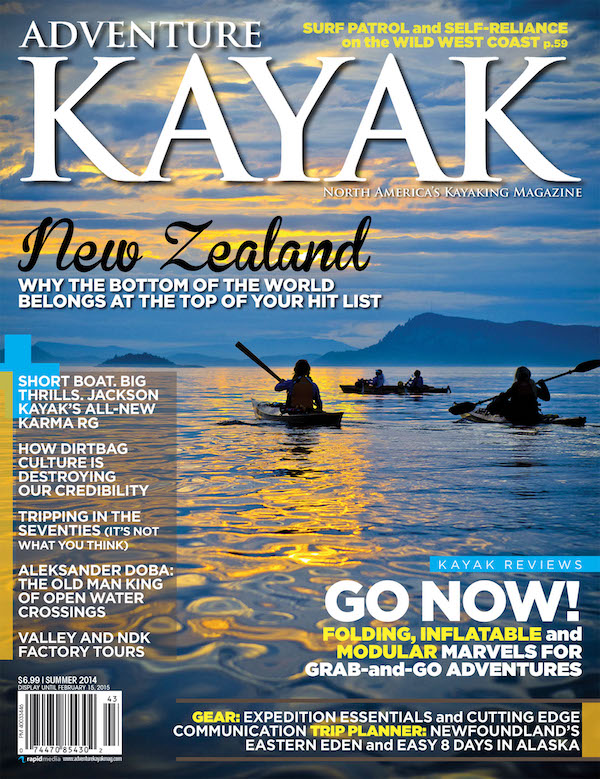Less is more. Witness the glut of fuel-efficient ultra-compacts, the small home movement and the profusion of five-minute workouts. Kayak manufacturers have embraced this philosophy with a growing sector: light touring.
What is light touring, anyway? On the facing page you’ll find an ad from Delta Kayaks for their new 12-footer with this summary: “Light touring kayaks are a great choice for the recreational or transitional paddler looking for better performance in a smaller lightweight design.”
While light touring designs can certainly be that next step up, they also appeal to those looking to scale down. Our backcountry adventures are becoming fewer and getting shorter. According to a recent participation study from the Outdoor Industry Association, 86 percent of camping trips last four nights or less, with the majority of campers getting away for just one or two nights. Traffic, overtime, school and organized activities crowd our hectic schedules, making long expeditions—and long kayaks—impractical.
Since mini touring kayaks first started to emerge a decade ago, their sales have rapidly outpaced those of 17-foot sea kayaks. More and better designs have followed. Delta now has twice as many light touring models as they do those in the classic 16- to 18-foot range. And they’re not alone. Walk into any kayak shop and you’ll notice these shrinking waterlines.
The basic principle behind light touring kayaks is this: Less boat equals more paddling.
It’s not as contrary as it sounds. Consider light foods. The invariable truth about light food, as most of us know, is that often you just enjoy more of it, more often. Light beer, light crackers, light cheesecake – “I’ll have another, thanks…it’s light.”
Boat manufacturers are betting the same is true of touring light. While light foods shave kilocalories, light touring designs cut kilograms. Lighter, shorter boats are easier to get from garage or basement to roof rack and from rack to water, so you’re more inclined to get out after work or at lunch, even if its just for an hour.
Lighter, shorter boats are easier to get from garage or basement to roof rack and from rack to water, so you’re more inclined to get out after work or at lunch, even if its just for an hour.
If light touring kayaks reduce the reasons why you don’t paddle more often, there’s another niche of boats that are even more manageable – portable, inflatable, or folding boats.

Transporting a folding or inflatable boat is as easy as pulling the duffel from your closet and tossing it in your trunk, or onto a bike trailer, bus or subway. At the launch, set-up time can be as little as five minutes. Just grab and go – no car-topping, no storage headaches, no excuses.
For the 82 percent of North Americans living in urban environments, a portage kayak’s compact size and light weight make it the ultimate Tuesday night boat – a boat that’s easy to enjoy wherever it’s convenient and whenever there’s an hour or two to escape.
Light touring, inflatable and folding kayaks are also more affordable. You can buy two of these boat for the price of one expedition kayak. One less excuse – now you have someone to go paddling with.
Adventure Kayak editor Virginia Marshall is looking forward to spending more weekdays on the water.
This article first appeared in the Summer 2014 issue of Adventure Kayak Magazine. Subscribe to Paddling Magazine and get 25 years of digital magazine archives including our legacy titles: Rapid, Adventure Kayak and Canoeroots.



